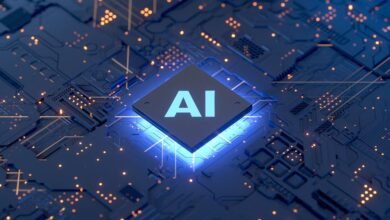
Astrophysics, the study of celestial objects and phenomena beyond Earth’s atmosphere, is entering a transformative era with the integration of Artificial Intelligence (AI). This article delves into the potential of AI in astrophysics, exploring how advanced algorithms and machine learning are revolutionizing our understanding of the cosmos.
Big Data Challenges in Astrophysics
Astrophysics generates vast amounts of data from telescopes, satellites, and other observational instruments. AI addresses the challenges of analyzing this big data by providing efficient tools for data processing, pattern recognition, and extraction of meaningful insights.
Automated Detection of Celestial Objects
AI algorithms can autonomously detect and classify celestial objects in massive datasets. This includes identifying galaxies, stars, exoplanets, and other astronomical phenomena, allowing astrophysicists to focus on interpreting results rather than manual data sorting.
AI in Exoplanet Hunting
AI is playing a significant role in the discovery of exoplanets. Machine learning models analyze light curves and other observational data to identify subtle changes indicative of exoplanetary transits. This accelerates the process of discovering new planets beyond our solar system.
Characterization of Exoplanetary Atmospheres
AI assists in characterizing the atmospheres of exoplanets by analyzing spectroscopic data. This enables astrophysicists to infer the composition and properties of exoplanetary atmospheres, providing valuable insights into the potential habitability of these distant worlds.
Enhancing Gravitational Wave Searches
The detection of gravitational waves, ripples in spacetime caused by cataclysmic events like merging black holes, is a complex task. AI algorithms enhance the sensitivity of gravitational wave detectors by distinguishing signal from noise, increasing the accuracy of gravitational wave detections.
Data Analysis in LIGO and Virgo Collaborations
AI plays a crucial role in data analysis for large-scale collaborations like LIGO (Laser Interferometer Gravitational-Wave Observatory) and Virgo. Machine learning models help identify gravitational wave signals amidst background noise, contributing to the success of groundbreaking discoveries.
Mapping the Early Universe
AI aids in the analysis of the Cosmic Microwave Background (CMB), the faint radiation left over from the early universe. Machine learning techniques enable the creation of detailed maps, helping astrophysicists unravel the mysteries of the universe’s formation and evolution.
Extracting Primordial Information
By applying AI algorithms to CMB data, researchers can extract primordial information about the universe, such as its age, composition, and fundamental parameters. This contributes to refining cosmological models and our understanding of the universe’s origin.
Event Horizon Telescope (EHT) Collaboration
The groundbreaking imaging of a black hole by the Event Horizon Telescope (EHT) collaboration was aided by AI. Machine learning techniques helped reconstruct high-resolution images from sparse data collected by a global network of telescopes, contributing to this historic achievement.
Studying Black Hole Dynamics
AI facilitates the analysis of data related to black hole dynamics. By processing observational data and simulations, machine learning models assist in studying the behavior, accretion processes, and gravitational effects near black holes.
Advancements in AI Technologies
The future of AI in astrophysics holds promises of advancements in neural networks, deep learning, and quantum computing. These technologies will enable more sophisticated analyses, accelerating discoveries and expanding our understanding of the cosmos.
Interdisciplinary Collaboration
Collaboration between astrophysicists and AI experts is crucial for the successful integration of AI in astrophysics. Interdisciplinary teams ensure that AI tools align with the specific challenges of astrophysical research and contribute to scientific breakthroughs.
Conclusion
AI is proving to be a powerful ally in the exploration of the cosmos, revolutionizing how astrophysicists analyze data, make discoveries, and unlock the secrets of the universe. From automating data analysis and exoplanet discovery to enhancing gravitational wave searches and imaging black holes, the potential of AI in astrophysics is vast. As technology continues to advance, the synergy between human intellect and artificial intelligence will propel astrophysics into new frontiers of knowledge.
FAQs
How does AI contribute to exoplanet discovery?
AI contributes to exoplanet discovery by analyzing light curves and other observational data to identify subtle changes indicative of exoplanetary transits. Machine learning models accelerate the process of discovering new planets beyond our solar system.
What role does AI play in gravitational wave detection?
AI plays a crucial role in gravitational wave detection by enhancing the sensitivity of detectors and distinguishing gravitational wave signals from background noise. Machine learning models contribute to the accuracy of gravitational wave detections, aiding large-scale collaborations like LIGO and Virgo.
How does AI assist in black hole imaging and analysis?
AI aids in black hole imaging and analysis by helping reconstruct high-resolution images from sparse data collected by telescopes in collaborations like the Event Horizon Telescope (EHT). Machine learning techniques also assist in studying black hole dynamics by processing observational data and simulations.



